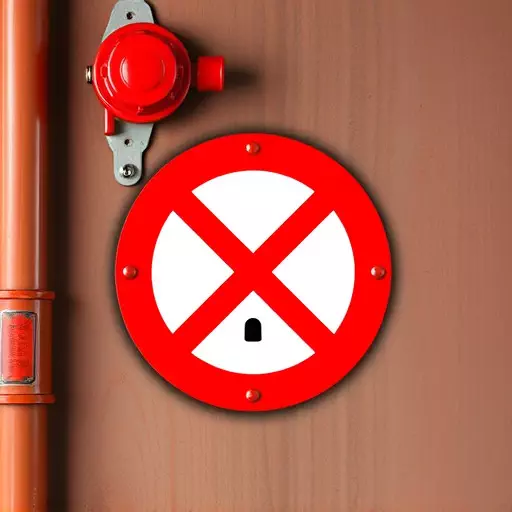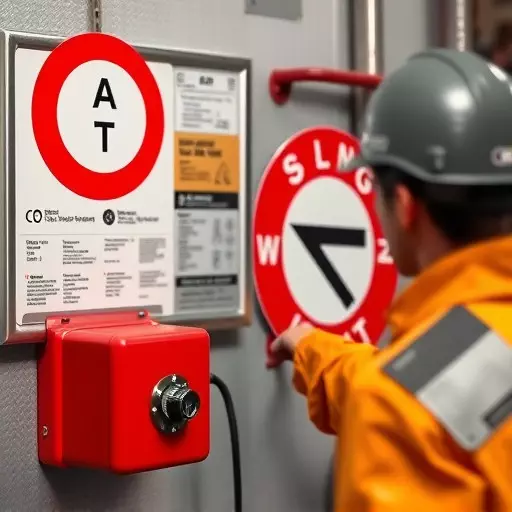Lockout/Tagout (L/T/O) is a vital safety protocol for industries handling energy-intensive equipment, aiming to prevent accidents during maintenance. OSHA guidelines mandate specific L/T/O practices and compliance training for all personnel. This training covers safe isolation, lock/tag application, de-energization protocols, and risk assessments, empowering employees to mitigate hazards. Regular energy control procedures training, interactive sessions with practical demonstrations, and clear signage are essential for OSHA compliance, fostering a safety culture that prioritizes employee well-being. Regular audits and consistent maintenance ensure continuous improvement in L/T/O programs, aligning with OSHA standards and promoting workplace safety.
In today’s industrial landscape, ensuring safe work practices is paramount. One critical aspect, often overlooked yet vital, is Lockout/Tagout (L/T) procedures. This comprehensive guide delves into the essential elements of L/T compliance training, addressing OSHA standards and energy control procedures. From creating effective signage to identifying common mistakes, we explore strategies to enhance safety. Understanding these requirements is not just a legal necessity but a responsibility to protect workers and maintain a secure work environment.
- Understanding Lockout/Tagout: A Fundamental Safety Practice
- OSHA's Role and the Importance of Lockout Tagout Standards
- Energy Control Procedures: Essential Components for Training
- Creating Effective Lockout/Tagout Signage: Key Requirements
- Implementing Compliance Training Programs for Safe Work Practices
- Common Mistakes to Avoid During Lockout/Tagout Procedures
- Regular Audits and Maintenance: Ensuring Continuous Safety
Understanding Lockout/Tagout: A Fundamental Safety Practice
Understanding Lockout/Tagout is a fundamental safety practice for any workplace dealing with equipment or machinery that uses energy sources like electricity, hydraulics, or compressed air. This critical process ensures that employees are protected from potential hazards during maintenance and repair activities. OSHA (Occupational Safety and Health Administration) has established specific lockout tagout standards to guide organizations in implementing effective energy control procedures.
Lockout tagout compliance training is essential for all personnel involved in these tasks, as it teaches them how to safely isolate equipment, apply locks or tags, and follow proper de-energization protocols. By adhering to OSHA’s guidelines, companies can prevent accidents, injuries, and even fatalities related to unexpected energy activation during maintenance. Energy control procedures training equips workers with the knowledge to recognize potential risks and take proactive measures for a safer work environment.
OSHA's Role and the Importance of Lockout Tagout Standards
OSHA plays a pivotal role in ensuring workplace safety across industries, and their guidelines on lockout/tagout (L/T) practices are essential for organizations to maintain compliance. These OSHA lockout tagout standards outline critical procedures for de-energizing equipment during maintenance or repair to prevent accidental activation and related injuries.
The importance of lockout tagout compliance training cannot be overstated. It empowers employees with the knowledge and skills needed to implement energy control procedures safely, reducing risks associated with energized equipment. Effective L/T training includes understanding different locking devices, proper tagging protocols, and safe work practices, fostering a culture of safety within the organization and aligning with OSHA’s mission to prevent workplace injuries and fatalities.
Energy Control Procedures: Essential Components for Training
In the context of workplace safety, lockout/tagout (L/T/O) compliance training is paramount to prevent accidents and protect workers, especially in industries dealing with hazardous energy sources. This training involves educating employees on implementing effective energy control procedures as per OSHA (Occupational Safety and Health Administration) standards. It ensures that when equipment or machinery needs to be serviced or maintained, the right protocols are followed to de-energize and secure them safely.
The core components of lockout/tagout training include understanding different energy sources, risk assessments, proper locking and tagging techniques, and emergency procedures. By focusing on these aspects, organizations can create a robust safety culture and minimize the risks associated with energized equipment. Moreover, regular energy control procedures training helps employees stay updated, ensuring they are prepared to handle various scenarios effectively and in accordance with OSHA guidelines.
Creating Effective Lockout/Tagout Signage: Key Requirements
Creating effective Lockout/Tagout (L/T) signage is crucial for ensuring worker safety and OSHA lockout tagout standards compliance. When designing L/T signs, it’s essential to clearly communicate critical energy control procedures and potential hazards associated with equipment. This involves using straightforward language and iconic symbols that are easily understandable by workers from diverse backgrounds. Signage should also be placed prominently near the locked-out equipment, making it immediately visible during routine maintenance or emergency situations.
Key requirements include specifying the name of the energy source, the type of lock used, authorized personnel only access, and any necessary precautions. Additionally, providing clear instructions on de-energization, testing, and re-energy procedures ensures a systematic approach to lockout/tagout compliance training. Regular updates and maintenance of these signs are vital to reflect changes in equipment or work processes, thereby fostering a safe and informed workplace environment.
Implementing Compliance Training Programs for Safe Work Practices
Implementing effective Compliance Training Programs for Safe Work Practices is an integral part of meeting OSHA’s lockout/tagout standards, ensuring worker safety, and preventing accidents related to energy control procedures. These training programs should be tailored to educate employees on the proper use of lockout/tagout devices, safe work practices, and emergency response protocols. By providing comprehensive training, organizations can foster a culture of safety where every employee understands their role in preventing hazardous energy releases.
Regular training sessions, updated with the latest OSHA regulations, help keep workers informed about changing standards. Interactive workshops, practical demonstrations, and case studies can make these programs engaging and memorable. Moreover, encouraging open communication and feedback from employees ensures that training meets their needs and addresses any concerns or challenges they face in implementing lockout/tagout procedures.
Common Mistakes to Avoid During Lockout/Tagout Procedures
Many organizations overlook the importance of proper signage during lockout/tagout procedures, often leading to non-compliance with OSHA standards. One of the most common mistakes is failing to use clear, distinctive warning signs that clearly indicate the presence of locked-out equipment. These signs should include the words “LOCKED OUT” or “DANGER – NO ENTRY,” along with relevant symbols and safety messages. Additionally, they must be firmly attached to the equipment and highly visible to prevent accidental operation.
Another blunder is inadequate training for energy control procedures. Companies sometimes rush through the necessary training, leaving employees unaware of their responsibilities during a lockout/tagout event. This can result in serious accidents or even fatalities. It’s crucial to provide comprehensive training that covers all aspects of the process, including proper tagging techniques, personal protective equipment (PPE) usage, and safe re-entry procedures. Regular refresher courses are also essential to ensure workers remain competent and up-to-date with safety protocols.
Regular Audits and Maintenance: Ensuring Continuous Safety
Regular audits and maintenance are integral to sustaining a robust lockout/tagout (L/T) safety program. These thorough checks ensure that L/T devices, procedures, and personnel remain up-to-date with industry standards, such as those outlined by OSHA. By conducting periodic audits, organizations can identify any discrepancies or potential hazards in their energy control procedures training and rectify them promptly.
Maintaining a consistent audit schedule allows for continuous improvement and compliance with OSHA lockout tagout standards. It enables businesses to stay ahead of regulatory changes, adapt to new safety technologies, and foster a culture of workplace safety. Regular maintenance also includes testing equipment, inspecting tags, and replacing worn-out parts, ensuring that every step in the L/T process remains effective and efficient.


